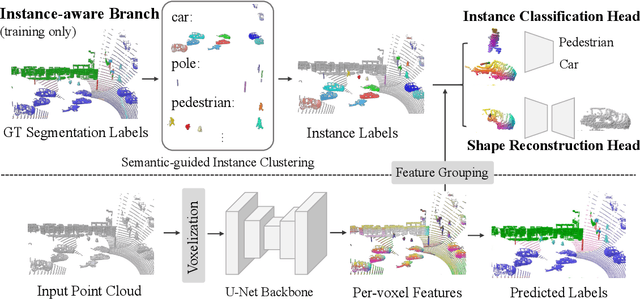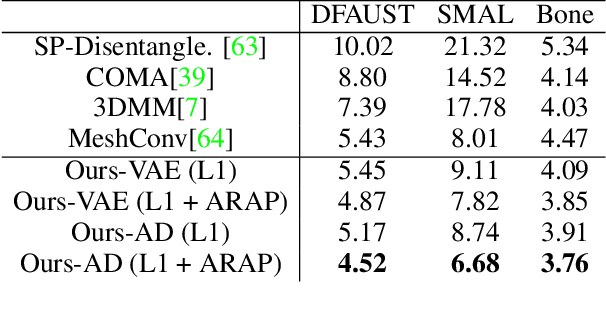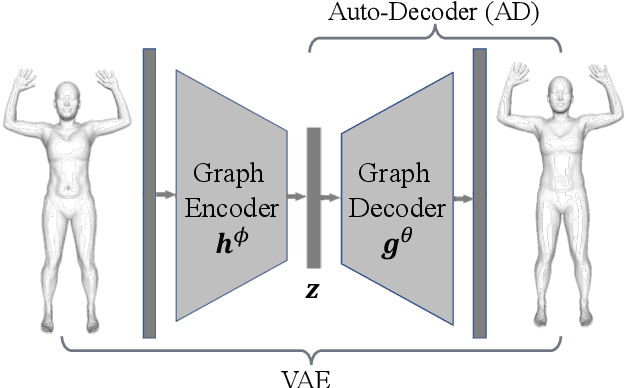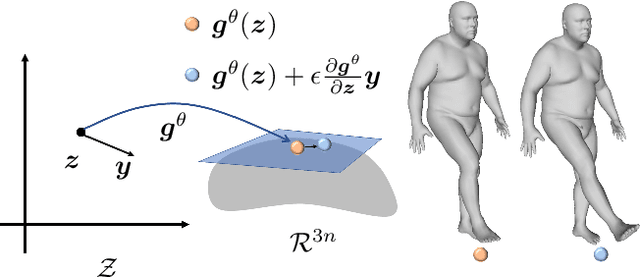Xiangru Huang
VidCRAFT3: Camera, Object, and Lighting Control for Image-to-Video Generation
Feb 12, 2025Abstract:Recent image-to-video generation methods have demonstrated success in enabling control over one or two visual elements, such as camera trajectory or object motion. However, these methods are unable to offer control over multiple visual elements due to limitations in data and network efficacy. In this paper, we introduce VidCRAFT3, a novel framework for precise image-to-video generation that enables control over camera motion, object motion, and lighting direction simultaneously. To better decouple control over each visual element, we propose the Spatial Triple-Attention Transformer, which integrates lighting direction, text, and image in a symmetric way. Since most real-world video datasets lack lighting annotations, we construct a high-quality synthetic video dataset, the VideoLightingDirection (VLD) dataset. This dataset includes lighting direction annotations and objects of diverse appearance, enabling VidCRAFT3 to effectively handle strong light transmission and reflection effects. Additionally, we propose a three-stage training strategy that eliminates the need for training data annotated with multiple visual elements (camera motion, object motion, and lighting direction) simultaneously. Extensive experiments on benchmark datasets demonstrate the efficacy of VidCRAFT3 in producing high-quality video content, surpassing existing state-of-the-art methods in terms of control granularity and visual coherence. All code and data will be publicly available.
Instance-aware 3D Semantic Segmentation powered by Shape Generators and Classifiers
Nov 21, 2023



Abstract:Existing 3D semantic segmentation methods rely on point-wise or voxel-wise feature descriptors to output segmentation predictions. However, these descriptors are often supervised at point or voxel level, leading to segmentation models that can behave poorly at instance-level. In this paper, we proposed a novel instance-aware approach for 3D semantic segmentation. Our method combines several geometry processing tasks supervised at instance-level to promote the consistency of the learned feature representation. Specifically, our methods use shape generators and shape classifiers to perform shape reconstruction and classification tasks for each shape instance. This enforces the feature representation to faithfully encode both structural and local shape information, with an awareness of shape instances. In the experiments, our method significantly outperform existing approaches in 3D semantic segmentation on several public benchmarks, such as Waymo Open Dataset, SemanticKITTI and ScanNetV2.
GenCorres: Consistent Shape Matching via Coupled Implicit-Explicit Shape Generative Models
Apr 20, 2023



Abstract:This paper introduces GenCorres, a novel unsupervised joint shape matching (JSM) approach. The basic idea of GenCorres is to learn a parametric mesh generator to fit an unorganized deformable shape collection while constraining deformations between adjacent synthetic shapes to preserve geometric structures such as local rigidity and local conformality. GenCorres presents three appealing advantages over existing JSM techniques. First, GenCorres performs JSM among a synthetic shape collection whose size is much bigger than the input shapes and fully leverages the data-driven power of JSM. Second, GenCorres unifies consistent shape matching and pairwise matching (i.e., by enforcing deformation priors between adjacent synthetic shapes). Third, the generator provides a concise encoding of consistent shape correspondences. However, learning a mesh generator from an unorganized shape collection is challenging. It requires a good initial fitting to each shape and can easily get trapped by local minimums. GenCorres addresses this issue by learning an implicit generator from the input shapes, which provides intermediate shapes between two arbitrary shapes. We introduce a novel approach for computing correspondences between adjacent implicit surfaces and force the correspondences to preserve geometric structures and be cycle-consistent. Synthetic shapes of the implicit generator then guide initial fittings (i.e., via template-based deformation) for learning the mesh generator. Experimental results show that GenCorres considerably outperforms state-of-the-art JSM techniques on benchmark datasets. The synthetic shapes of GenCorres preserve local geometric features and yield competitive performance gains against state-of-the-art deformable shape generators.
LiDAR-Based 3D Object Detection via Hybrid 2D Semantic Scene Generation
Apr 04, 2023Abstract:Bird's-Eye View (BEV) features are popular intermediate scene representations shared by the 3D backbone and the detector head in LiDAR-based object detectors. However, little research has been done to investigate how to incorporate additional supervision on the BEV features to improve proposal generation in the detector head, while still balancing the number of powerful 3D layers and efficient 2D network operations. This paper proposes a novel scene representation that encodes both the semantics and geometry of the 3D environment in 2D, which serves as a dense supervision signal for better BEV feature learning. The key idea is to use auxiliary networks to predict a combination of explicit and implicit semantic probabilities by exploiting their complementary properties. Extensive experiments show that our simple yet effective design can be easily integrated into most state-of-the-art 3D object detectors and consistently improves upon baseline models.
ARAPReg: An As-Rigid-As Possible Regularization Loss for Learning Deformable Shape Generators
Aug 21, 2021



Abstract:This paper introduces an unsupervised loss for training parametric deformation shape generators. The key idea is to enforce the preservation of local rigidity among the generated shapes. Our approach builds on an approximation of the as-rigid-as possible (or ARAP) deformation energy. We show how to develop the unsupervised loss via a spectral decomposition of the Hessian of the ARAP energy. Our loss nicely decouples pose and shape variations through a robust norm. The loss admits simple closed-form expressions. It is easy to train and can be plugged into any standard generation models, e.g., variational auto-encoder (VAE) and auto-decoder (AD). Experimental results show that our approach outperforms existing shape generation approaches considerably on public benchmark datasets of various shape categories such as human, animal and bone.
Joint Learning of Neural Networks via Iterative Reweighted Least Squares
May 16, 2019



Abstract:In this paper, we introduce the problem of jointly learning feed-forward neural networks across a set of relevant but diverse datasets. Compared to learning a separate network from each dataset in isolation, joint learning enables us to extract correlated information across multiple datasets to significantly improve the quality of learned networks. We formulate this problem as joint learning of multiple copies of the same network architecture and enforce the network weights to be shared across these networks. Instead of hand-encoding the shared network layers, we solve an optimization problem to automatically determine how layers should be shared between each pair of datasets. Experimental results show that our approach outperforms baselines without joint learning and those using pretraining-and-fine-tuning. We show the effectiveness of our approach on three tasks: image classification, learning auto-encoders, and image generation.
Learning Transformation Synchronization
Jan 27, 2019



Abstract:Reconstructing the 3D model of a physical object typically requires us to align the depth scans obtained from different camera poses into the same coordinate system. Solutions to this global alignment problem usually proceed in two steps. The first step estimates relative transformations between pairs of scans using an off-the-shelf technique. Due to limited information presented between pairs of scans, the resulting relative transformations are generally noisy. The second step then jointly optimizes the relative transformations among all input depth scans. A natural constraint used in this step is the cycle-consistency constraint, which allows us to prune incorrect relative transformations by detecting inconsistent cycles. The performance of such approaches, however, heavily relies on the quality of the input relative transformations. Instead of merely using the relative transformations as the input to perform transformation synchronization, we propose to use a neural network to learn the weights associated with each relative transformation. Our approach alternates between transformation synchronization using weighted relative transformations and predicting new weights of the input relative transformations using a neural network. We demonstrate the usefulness of this approach across a wide range of datasets.
 Add to Chrome
Add to Chrome Add to Firefox
Add to Firefox Add to Edge
Add to Edge